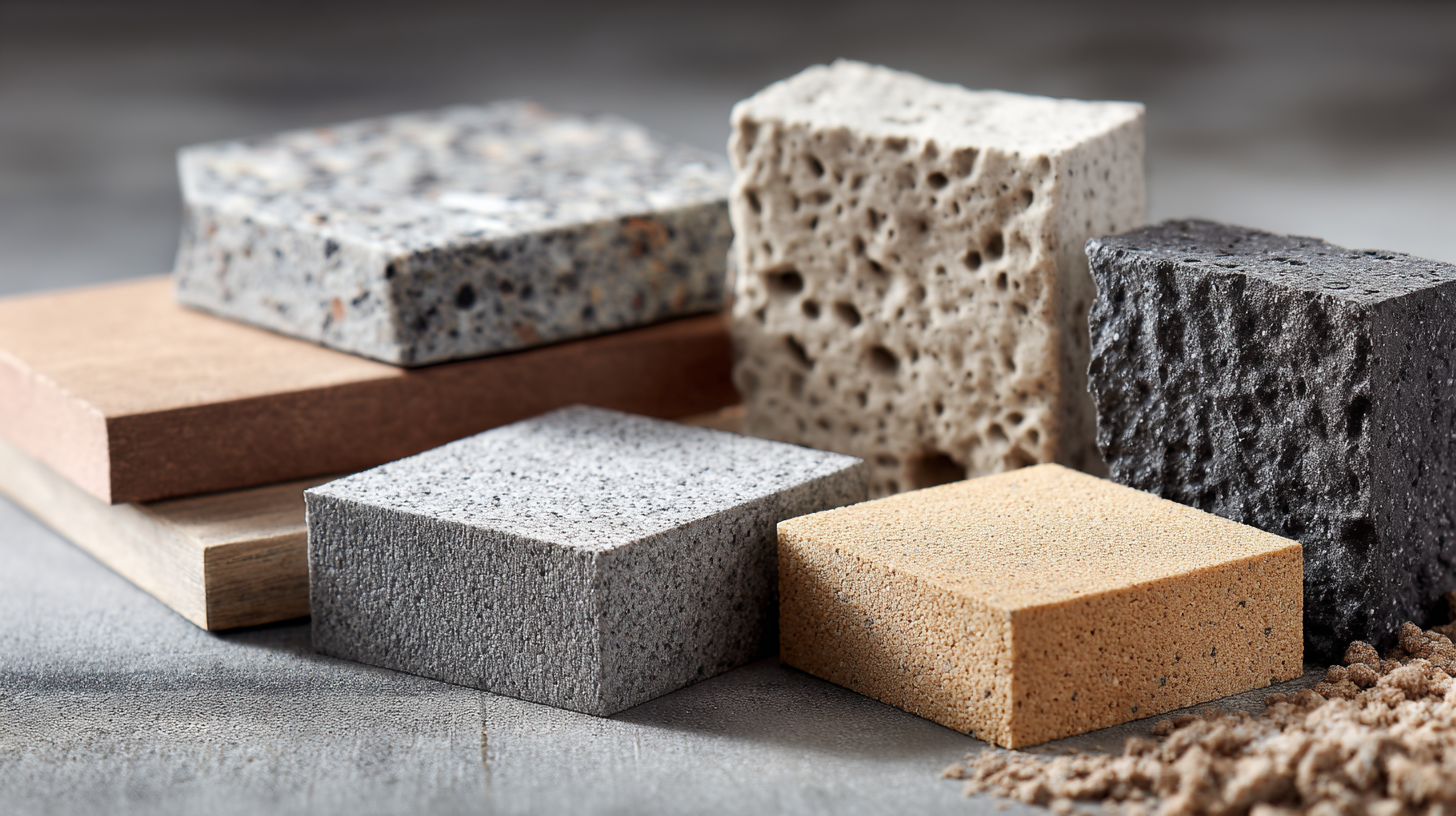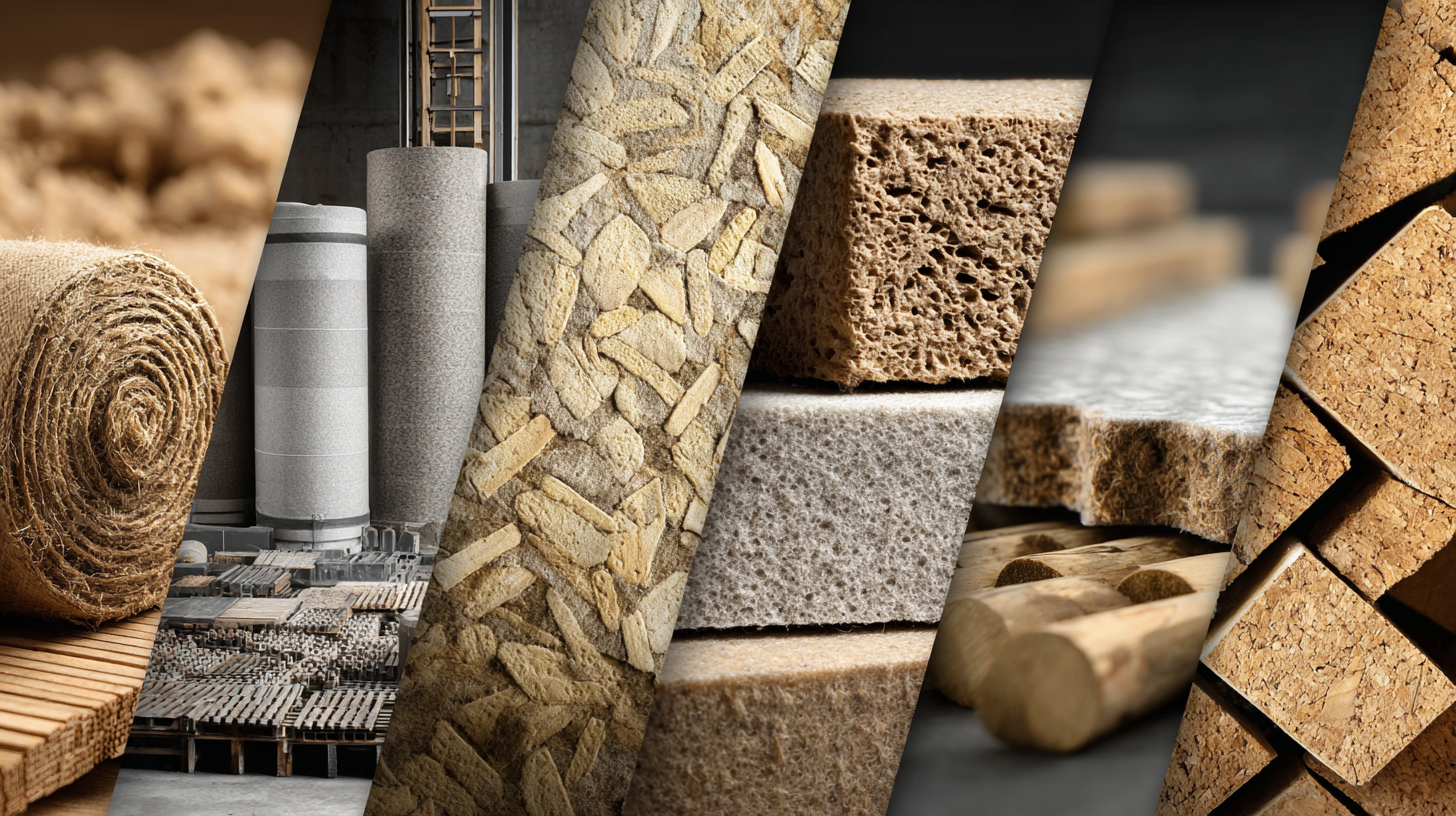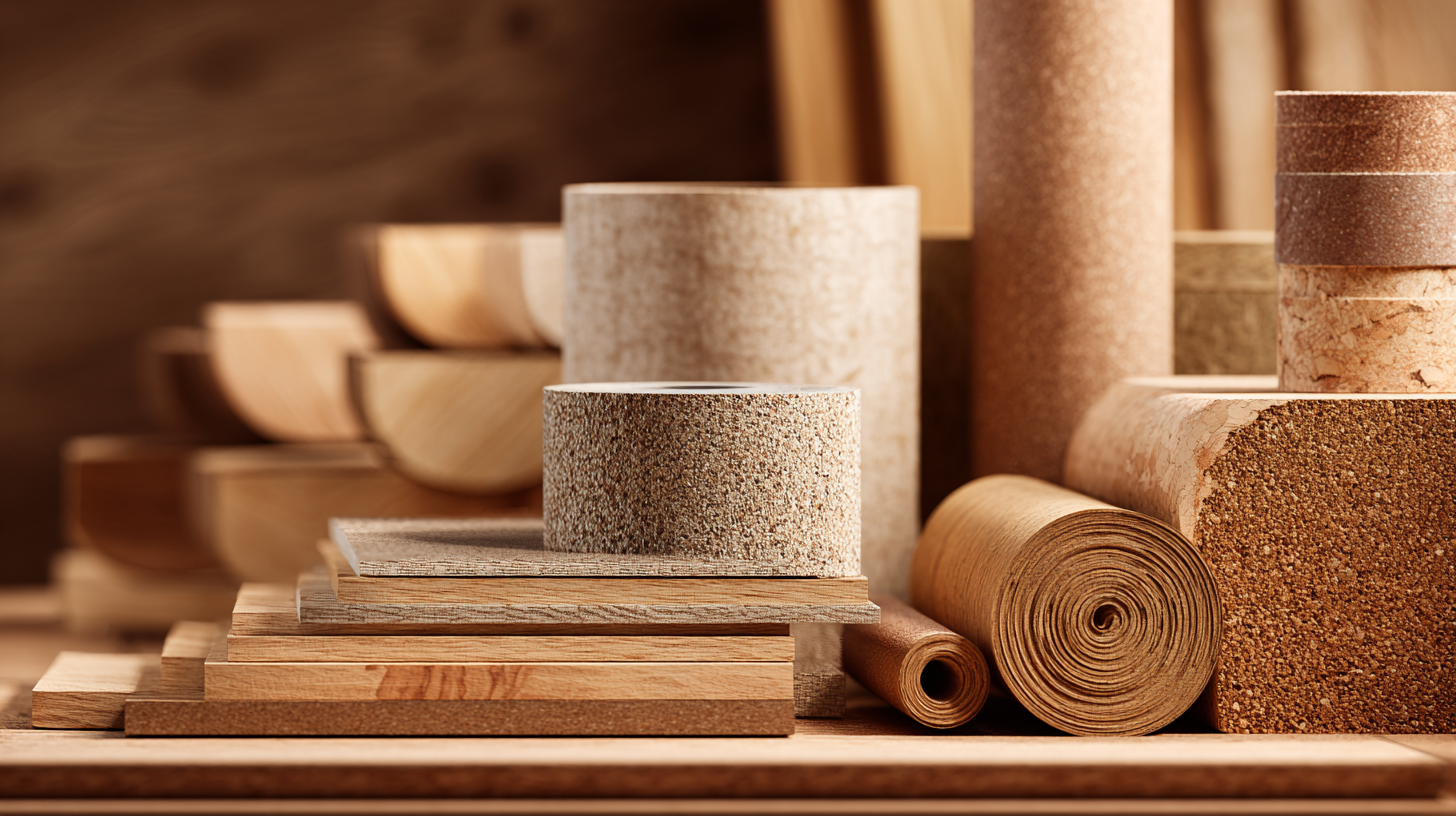Global Leaders in Manufacturing: Discover the Best Acoustic Building Materials
In the evolving landscape of manufacturing, the focus on sustainable and efficient building solutions is more critical than ever. One area gaining significant traction is the use of Acoustic Building Materials, which not only enhance sound insulation but also contribute to healthier living environments. According to a report by Research and Markets, the global acoustic insulation market is projected to reach $40.86 billion by 2025, growing at a compound annual growth rate (CAGR) of 5.9%. This surge underscores the increasing demand for materials that mitigate noise pollution in urban settings. As global leaders in manufacturing gravitate towards innovative building solutions, understanding the top strategies and emerging technological trends of 2025 will be essential for stakeholders aiming to stay competitive. Such insights will help in harnessing the potential of acoustic materials to meet both regulatory standards and consumer expectations, ultimately shaping the future of construction and architecture.

Exploring Sustainable Alternatives in Acoustic Building Materials
The shift towards sustainable building materials is transforming the construction industry, particularly in the realm of acoustic insulation. Recent studies highlight the emergence of innovations such as plant-based natural insulation materials paired with waste-expanded polystyrene composite binders, significantly enhancing thermo-acoustic efficiency for sustainable building envelopes. These advancements underscore the importance of developing eco-friendly solutions that not only reduce environmental impact but also deliver superior acoustic performance.
A remarkable development in this arena is the rise of companies focusing on renewable resources for acoustic materials. For instance, a startup in Jyväskylä has successfully raised €29 million to scale production of their innovative acoustic tiles made from renewable wood fibers. This funding will facilitate expanded production capabilities, reinforcing the trend of prioritizing sustainability while addressing the increasing demand for effective sound-reducing solutions in urban environments.
Additionally, the exploration of bio-based insulation materials is gaining traction, with research indicating that these materials are not only durable but also provide excellent thermal and acoustic insulation. This aligns with the growing market interest in sustainable solutions, as evidenced by the projected CAGR of 4.28% for the global hempcrete market, reflecting a shift towards more eco-friendly building practices that encompass both sustainability and high performance.

Innovative Techniques for Enhancing Sound Absorption
Sound absorption is a critical aspect of acoustic building materials, and innovative techniques are continuously emerging to enhance this property. One notable advancement is the use of porous materials in sound system designs, exemplified by the recent developments in small speaker technology. By utilizing materials akin to sound-absorbing cotton, manufacturers are able to effectively enlarge the acoustic chamber volume, resulting in richer bass tones. This evolution in sound engineering not only benefits consumer electronics but also demonstrates the importance of applying similar principles in architectural acoustics.
The global market for acoustic panels, particularly those made from wood wool, is projected to grow significantly, with estimates indicating a rise from $9 billion in 2024 to $25.1 billion by 2033, at a compound annual growth rate of approximately 12.15%. This growth is driven by an increasing awareness of sound absorption's role in creating healthier and more productive spaces. As manufacturers focus on materials that enhance sound control, the integration of advanced technologies, such as metamaterials, is likely to play a pivotal role in further breakthroughs within the industry.
Global Leaders in Manufacturing: Best Acoustic Building Materials
This chart showcases the sound absorption coefficients of various acoustic building materials. A higher coefficient indicates better sound absorption, which is crucial for creating quiet and comfortable environments.
Comparative Analysis of Traditional and Alternative Acoustic Solutions
In the pursuit of excellent acoustic performance within building spaces, both traditional and alternative acoustic solutions have emerged as pivotal contenders. Traditional materials such as mineral wool and fiberglass have long been the go-to options for contractors, offering substantial sound absorption properties with a Noise Reduction Coefficient (NRC) often exceeding 0.90, as noted in the 2023 Acoustic Review. While these materials provide reliability, advancements in technology have led to the rise of innovative alternatives, including recycled and bio-based materials that not only meet acoustic demands but also contribute positively to environmental sustainability.

When considering alternative solutions, products like acoustic panels made from natural fibers or recycled plastics are gaining traction. Data from the Green Building Council indicates that these materials can achieve similar NRC ratings while also reducing a building’s carbon footprint by up to 30%. Integrating such materials may align with LEED certification goals, making them an attractive option for environmentally conscious developers.
Tips: When selecting acoustic materials, assess both the acoustic performance and the environmental impact. Look for manufacturers who provide transparent data on their product’s sustainability claims. Additionally, consider hybrid approaches that combine traditional and alternative materials to achieve optimal acoustic results while ensuring compliance with building regulations.
The Role of Natural Materials in Modern Acoustic Design
Natural materials have gained significant attention in modern acoustic design due to their unique properties and environmental benefits. According to a report by the Acoustic Society of America, materials such as wood, cork, and bamboo not only effectively absorb sound waves but also contribute to healthier indoor environments. These materials help reduce noise pollution, enhance speech intelligibility, and create more comfortable spaces, making them ideal for both commercial and residential projects.
When selecting natural acoustic materials, consider their sound absorption coefficients and sustainability. For instance, cork boasts a high sound absorption rating of up to 0.75, making it an excellent choice for soundproofing applications. Furthermore, using materials like reclaimed wood not only promotes sustainability but also adds aesthetic value to interiors.
Tip: Ensure to assess the acoustic performance of each material in your specific space. Combining different natural materials can achieve optimal sound quality while maintaining an eco-friendly approach. Another effective strategy is integrating plants and green walls, which can enhance acoustic performance and improve air quality simultaneously.
Future Trends in Eco-Friendly Acoustic Building Materials
In recent years, the demand for eco-friendly acoustic building materials has surged, driven by a greater awareness of sustainability and noise pollution. Manufacturers are increasingly developing innovative materials that not only absorb sound but also minimize environmental impact. Natural fibers like wool, hemp, and cork are leading the way, offering effective sound insulation while being biodegradable and renewable. These materials align perfectly with modern architecture's shift towards sustainability and health-friendly building practices.
When choosing acoustic materials for your projects, consider incorporating recycled content. Products made from repurposed materials not only reduce waste but also contribute to lower carbon footprints. Additionally, engage with suppliers who prioritize sustainability in their production processes. This ensures you support companies that align with your eco-friendly values, making a positive impact on the planet while enhancing the acoustic quality of your spaces.
Moreover, explore multifunctional products that offer dual benefits, such as acoustic panels that also serve as decorative elements. This approach not only saves space but also enhances aesthetic appeal without compromising on sound absorption. Always stay informed about emerging technologies and trends, as the market for eco-friendly acoustic solutions continues to evolve rapidly.
Global Leaders in Manufacturing: Discover the Best Acoustic Building Materials - Future Trends in Eco-Friendly Acoustic Building Materials
| Material Type | Sound Absorption Coefficient | Recycled Content (%) | Thermal Insulation (R-value) | Sustainability Rating |
|---|---|---|---|---|
| Recycled Cotton Panels | 0.80 | 85 | R-3.5 | A+ |
| Hemp Acoustic Panels | 0.75 | 70 | R-4.0 | A |
| Reclaimed Wood Panels | 0.70 | 100 | R-2.5 | A |
| Green Roof Systems | 0.85 | 60 | R-3.0 | A++ |
| Acoustic Plaster | 0.65 | 40 | R-2.0 | B |
-

Phone
-

E-mail
-

wechat
wechat

-

whatsapp
whatsapp


